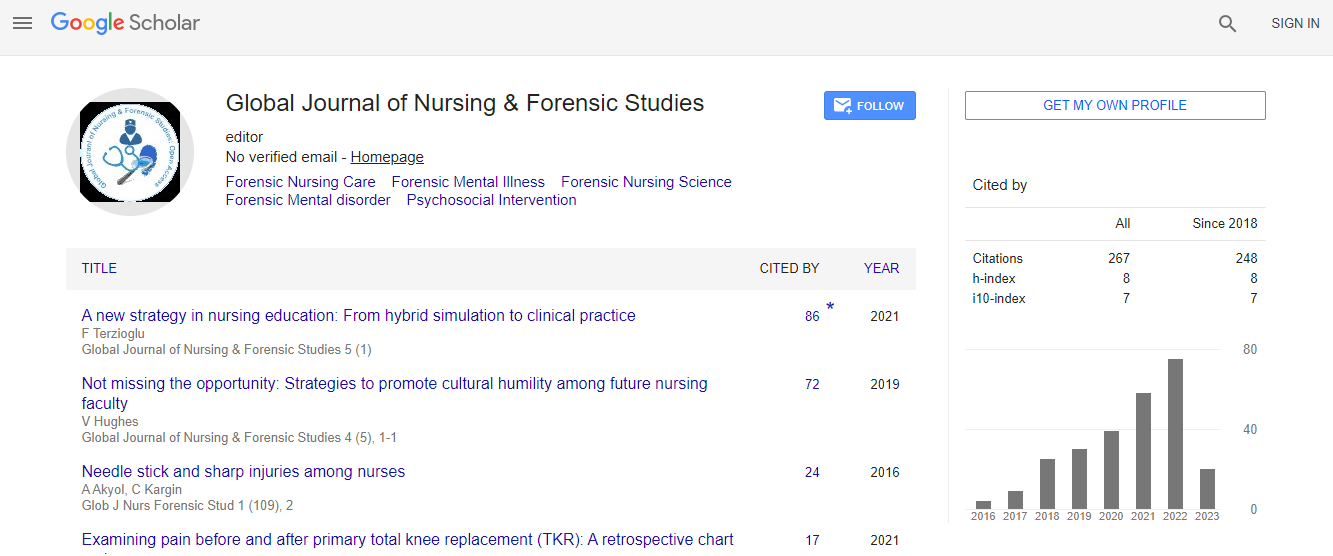Research Article
Needle Stick and Sharp Injuries among Nurses
Asiye Durmaz Akyol*
Ege University Faculty of Nursing, Izmir, Turkey
- *Corresponding Author:
- Asiye Durmaz Akyol
Ege University Faculty of Nursing, Izmir, Turkey
Tel: 0-232-3881103
E-mail: asiye.durmaz@ege.edu.tr
Received Date: November 11, 2016; Accepted Date: November 20, 2016; Published Date: November 27, 2016
Citation: Kargin C and Akyol AD (2016) Needle Stick and Sharp Injuries among Nurses. Glob J Nurs Forensic Stud 1: 109. doi: 10.4172/2572-0899.1000109
Copyright: © 2016 Akyol AD. This is an open-access article distributed under the terms of the Creative Commons Attribution License, which permits unrestricted use, distribution and reproduction in any medium, provided the original author and source are credited.
Abstract
The aims of this study are to determine the causes of sharp and needle stick injury in nurses working in a hospital, the use of safety practice exposure, to blood and blood containing material and contributing factors. A selfreport questionnaire was completed by 201 nurses working at three Turkish hospitals. The percentage of nurse’s “44.3% of the nurse’s experience a sharp or needle sticks injury during their professional life”. The most frequently encountered source of injury was injection needles (35.8%) followed by branules (5.5%), and suture needles (3.0%). Injuries occurred most frequently when the nurses were withdrawing a needle from rubber or other resistant material; recapping a used needle and disassembling a device or equipment. The majority of the nurses (74.6%) wear gloves and protective glasses. The study indicates that emphasis on work practice, disposal systems, education strategies and infection control precautions should be employed to reduce NSIs and contributing factors.

 Spanish
Spanish  Chinese
Chinese  Russian
Russian  German
German  French
French  Japanese
Japanese  Portuguese
Portuguese  Hindi
Hindi 